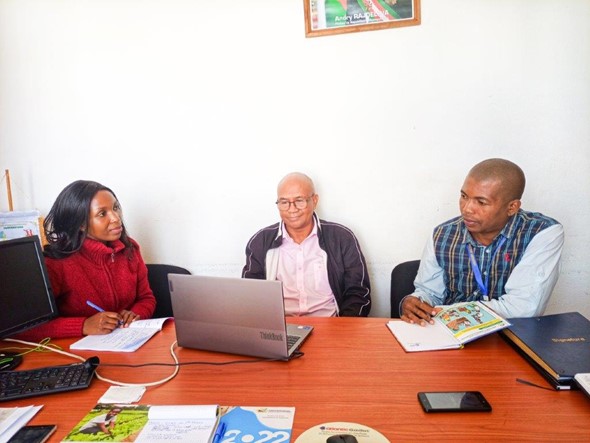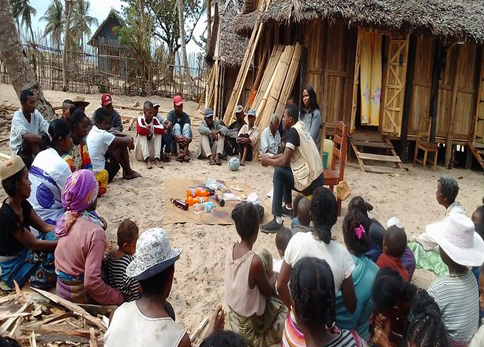March 29, 2023
CPDP Blog: Florence Umulisa’s story
This blog series will focus on the highlights from different Cash Practitioner Development Programme graduates, allowing practitioners to share what they have learnt and experienced during their Cash School learning deployments.
The Cash Practitioner Development Programme aims to expand the ready pool of cash experts available to deliver humanitarian cash assistance, and to strengthen the community of qualified practitioners with up-to-date skills in all areas of cash assistance. Cash deployments are a key element of participants learning schedules, these deployments aim to enhance skills and confidence in implementing cash based assistance. Some deployments are run in partnership with NORCAP, with practitioners accessing deployment opportunities from a range of humanitarian agencies.
Meet Florence from Our 2021 Cash Practitioner Development Programme!
Florence Umulisa, a former employee at the Rwanda Red Cross and now Response and Preparedness Project Management Delegate at the Netherlands Red Cross/South Sudan), reflects on her journey with CVA, offers advice to others considering applying to join the Cash Practitioner Development Programme (CPDP) and touches upon the need to incorporate cross-cutting themes when working with cash.

Tell me about your relationship with cash before undertaking the CPDP training
It was confusing when my National Society (NS) first began to use cash in 2019. However, the government social protection program’’Ubudehe’’ that provides ‘’Cash for Work’’ and the IFRC who did a hard sell on the merits of cash, gave us the final push to say let’s give it a go!
Through the initial training I received, I started to feel that cash Transfer was the best option for disaster response.
We started training staff and Board members and pre-positioning some tools for us to be cash ready via a Cash Preparedness project which was for supporting cash relatively quickly, and doing some disaster responses using Cash Transfers.
Why did you decide to start learning more about cash and the CPDP program?
From 2019-2021, I was the Cash Focal Point for the Rwanda Red Cross. It was during this time that a link to the CPDP training was shared with me asking for people with experience in supporting their NS with cash and voucher assistance (CVA) to join a cash learning program. It sold itself as being a program that supports cash practitioners to improve their skills and knowledge in the implementation of cash in CVA operations. As the Cash Focal Point, I felt that I need to undertake this program to ensure that our NS would be cash ready. I was interested in finding ways of responding effectively and efficiently to the needs of the recipients using CVA.
As we were still at the beginning of our cash journeys, I was interested to learn how cash can be coordinated at a large scale and how we can disseminate CVA in other programs outside of Disaster Response. I also wanted to extend the network and coordinate with other like-minded people for peer-to-peer learning in humanitarian domains.

Where did you go on deployment?
I went to Jordan and Madagascar. In Jordan, I was supporting Syrian refugee operations via the Cash Working Group (CWG) by updating the CVA risk matrix and doing the CVA PDM data analysis, which provided some recommendations for future operations. In Madagascar, I was also working with Cash Working Group in developing the Cash and Voucher Assistance Standard Operating Procedures for cyclone and Flood Response.
These were my first deployments and my first contact with different humanitarian CVA actors; it was interesting, to meet with CVA experts for Syria humanitarian actors who were doing more CVA response. With deployments, I learnt about CVA coordination to large scale emergencies, and how to link humanitarian CVA to government social protection.
In addition, it extended my network by joining other CVA platforms and groups such as MIC (Market in Crisis Community) and CashCap (Cash Capacity).
Tell me about your best moment on the CPDP program
- My first interaction with my CPDP peers at the start of the program was memorable. I enjoyed getting to know them and sharing our experiences. We are still in touch!
- The opportunity to be exposed to the new environment through deployment! With this, I got to learn practice how CVA can be used in a different context, how CVA is coordinated in complex emergencies with different humanitarian actors, as well as how to do a CVA risk matrix and risk analysis.
What advice do you have for someone new to the program?
- First, it is better to be clear with the objective of why you want to join CPDP.
- Second, CVA is evolving and getting large with some innovations in different components, so do not get tired! Take time to rest and enjoy learning.
- Third, be in touch with your mentor, ask for advice, and share your thoughts.
- The deployment is key to cementing your learning on cash. However, you will need to keep practicing these new skills once you leave the program gained as otherwise, they will slip your mind!
Tell me about life after the program
I started using the CPDP skills even during the learning period when I was working for Rwanda Red Cross, whereby CVA started getting implemented in other programs related to WASH and Livelihood.
By now, with the Project financed by the Netherlands Red Cross, I am technically supporting the capacity building of the South Sudan Red Cross in disaster preparedness and Response including the CVA preparedness as a component for the National Society to be Cash Ready

What do you see for the future of cash?
Looking at CVA community feedback, the increased users of CVA as a response modality including governments’ Social Protection Programs, and given the fact that CVA is getting used in different sectors WASH, Health, etc, CVA will occupy a high percentage in humanitarian response compared to in-kind/Cashplus. Also, as CVA is evolving, some investments in CVA learning are still a need to increase the number of staff with CVA skills and expertise. In addition, good inter-agency coordination will continue to be the key to success for operations with CVA as a response modality.
Any final thoughts?
Cross-cutting themes, such as Community, Engagement, Accountability (CEA), and Protection, need to be considered when designing a CVA program for effective operations. It has been reported that there are some differences in how different categories of households (households with women, people living with disabilities, etc) spend the money they are given to tailor to their specific needs.
